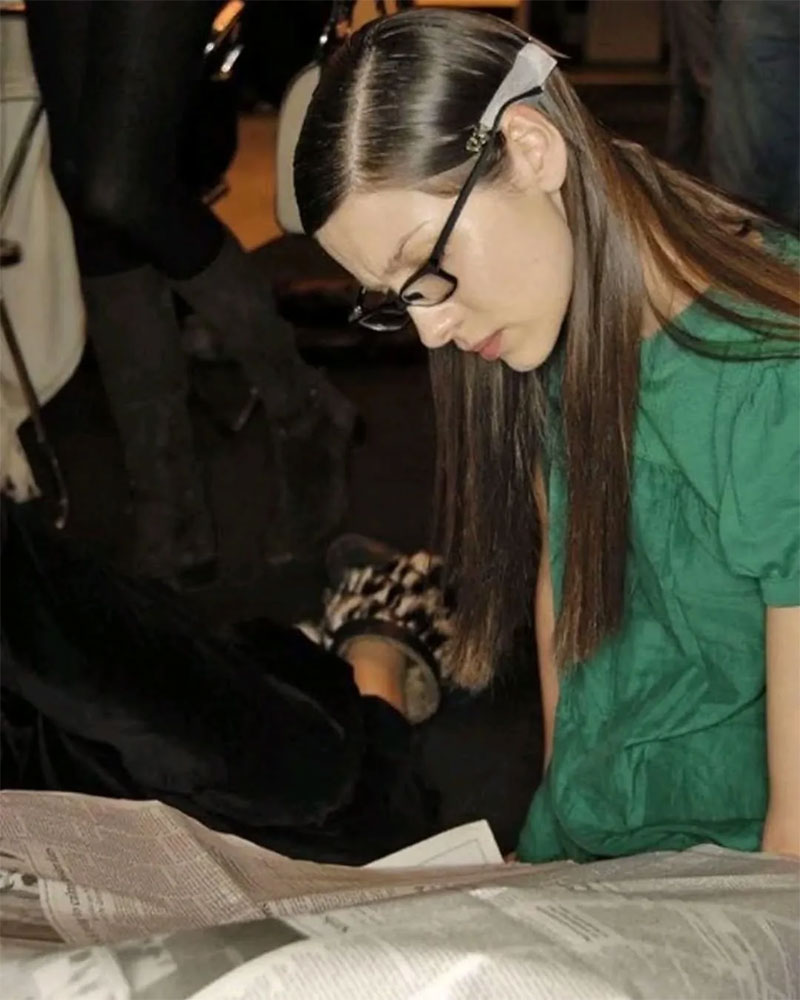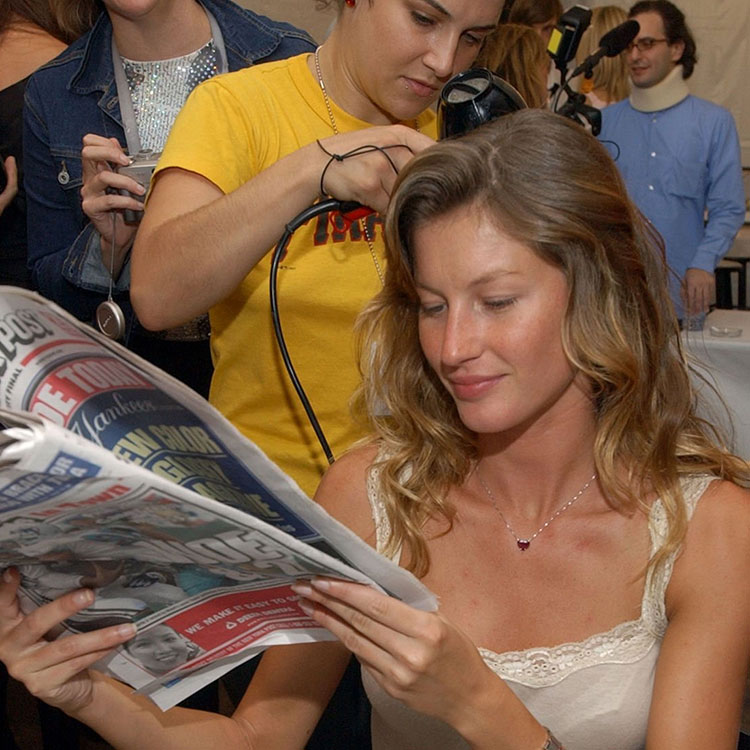
They’re perched front row, pen and notebook in hand (or, more likely now, a phone); they’re out the front of the sheds, buttonholing familiar faces, and backstage, squeezing in amongst the chaos to show how the sausage is made: all the journalists and reporters, editors and interns.
Media has always played a key role in New Zealand Fashion Week Kahuria, particularly now, with impressions, public reach and narratives around shows and designers outweighing the focus on buyers, as labels increasingly show in-season and consumers have unprecedented access.
The local ecosystem around fashion week is varied, with widely differing approaches and outputs. There are the independent, culture-focused websites, like Ensemble; freelance writers and guns for hire; and a new guard of content creators and influencers.
There are magazines, like Metro and Fashion Quarterly, who specialise in fashion and lifestyle (that catch-all title) working to print deadlines that may be weeks or even months after the event, while newspaper-inserted magazines, like Viva, are different again, with gruelling weekly deadlines and in some cases daily filing.
Stories largely focus on designers, trends and faces, with preemptive stories ahead of the week (who to know, what to wear, retrospective stories, etc) reviews and reporting throughout, and analysis afterwards, building context and interest.
Newsprint magazines are territory for gossip too; in the heyday of the social pages, in which About Town and Spy battled it out every week, Fashion Week was ripe fodder for their flavour of reportage (and sometimes, in the case of Aja Rock throwing wine on Bridget Saunders, the social pages spilled over into the front row, making headlines of their own).
And of course, there’s traditional “hard news” media: The New Zealand Herald, Stuff, RNZ, Newsroom. These are the stories that break through to the main paper (broadsheet once upon a time), the coveted homepage spot – all serious stuff, or deemed to have enough mass-appeal that they’ll find an audience beyond ragtrade acolytes and fashion nerds. With a mandate of focusing on what’s “newsworthy”, when and how they cover New Zealand Fashion Week has largely focused on household names and out-of-the-ordinary events. Past news coverage has spanned culturally insensitive runway items, transgender models and All Blacks in their undies.
Whatever your story is, as a journalist or editor, you have to sell it to the reader. How you package a story up for a newspaper or news website is hugely different from how you’d do so in a glossy quarterly magazine, which has the luxury of a whole page spread and a focused reader.
Unlike the twisty, metaphoric magazine headline, in a news environment, the title has to grab the reader by the collar (and is often out of a reporter's control). Classic tropes include puns, euphemisms and hyperbole borrowed from tabloid playbooks – celebrities shock and stun – while SEO best practice sees journalists encouraged to ascribe to Google terms.
What does that look like in Aotearoa? I dug around for which New Zealand Fashion Week events made the news in recent years, and the headliniest headlines.

NZ Fashion Week decides it's sexier by the sea (NZ Herald, 2004)
A time when runway shows and fashion were synonymous with sex appeal, this story announced the news that fashion week would be taking over the old Team New Zealand base, with the Viaduct considered "more edgy" than fashion week’s former venue, the Auckland Town Hall.
Ali's a model player (Stuff, 2009)
Rumours of his involvement in fashion week, which proved correct when he 'fished' wharf-side during the Huffer show.
Night club clash may end top model's career (NZ Herald, 2010)
For all the bad behaviour and Auckland crime that makes the papers any day week of the year, violence rarely happens at Fashion Week. Unfortunately for model Michael Whittaker, he was involved in “an ugly night club clash” that resulted in a “potentially career-ending broken nose” at a bar on Karangahape Road.
Action, flesh - all a bloke could ask for (Weekend Herald, 2003)
How does a sports writer frame up a fashion show? Tony Wall, attending Fashion Week for the first time, was front row at Doris De Pont’s show, and years later she told Dan Ahwa that he’d described it as “the most exciting thing I had been to since, well, a Canterbury - Waikato clash a few years back”.
Stretton's ode to erotica at Fashion Week (Stuff, 2009)
More sex in the headlines, but this time it made sense, with Annah Stretton’s show inspired by Freda Stark, a local dancer from the early 20th century.
Which ABs made the saucy NZFW Jockey show? (NZ Herald, 2019)
A show that always made headlines thanks to its irresistible combination of underwear and local celebrities, Jockey often invited All Blacks (and Black Ferns) onto the runway – a smart marketing move.
Rachel Glucina: Something smelled bad at Fashion Week, and it wasn't the whiff of fake tan (Spy, 2011)
That whiff in question? “The wretched stench of a possible taxpayer bailout,” Glucina wrote of Pieter Stewart’s opening night pleas to the Government and Auckland Council. In 2012 revelations of ATEED’s support of the event, to the tune of $225k, hit multiple outlets.
Carter spot-on with fashion kick-off (NZ Herald 2009)
The “metrosexual rugby star” and regular Huffer fixture might have been at Servilles salon alongside Pieter Stewart, but wouldn’t be attending any shows that year.
Model role for loo paper (Western Leader, 2003)
Of the surprisingly many news stories about toilet paper at New Zealand Fashion Week – a Kleenex Cottonelle contents – this headline made the most of its source
Pamela Anderson saves the breast for last at Fashion Week (The Dominion Post, 2009)
Courtesy of a titillating, sarong-wrapped runway appearance with Richie Rich, Anderson elicited headlines galore (even Vogue Australia).
NZ Fashion Week's secret plan to bring big tobacco to the catwalk (The Spinoff, 2019)
Vaping was mysterious and new to Kiwis, courting association with youth culture and trendy industries, but Philip Morris’ runway offer went up in smoke.
Riveting design in handbags (Otago Daily Times) 2009
Now this is how you headline a story about aluminium bags.
Why Is It Important New Zealand Has Its Own Fashion Week In 2025? (Viva, 2025)
Tyson Beckett (of Ensemble fame) is the latest writer to seek answers to this eternal query, considering the vast amount of time, energy and money that goes into putting on a runway show, and getting a whole industry together in one location for a week. RNZ's Serena Solomon also last week asked, What's the point?. Way back in 2012, Ensemble editor Zoe Walker Ahwa explored the future of New Zealand Fashion Week and also asked a question: “Now, in a time when the fashion retail industry is facing its biggest challenges in years, the next question is, is Fashion Week still doing its job?”
At a time when fashion's never been harder, with everyone involved strikingly candid about the matter, these are questions that the industry continues to ask itself. This year's event is only the second fashion week in six years, and that time out gave everyone a chance to miss it. Absence makes the heart grow fonder, and many in the industry are reminiscing about past shows, excited to come together, and leaning into the potential of the runway to express their creative vision, sell a dream and break through all that noise.
What you don't see in a headline is the long days, late nights and sprawling ecosystem involved in taking an idea from pattern paper to the flashing lights of the runway. Is it all worth it? We'll find out this week.
.jpg)




